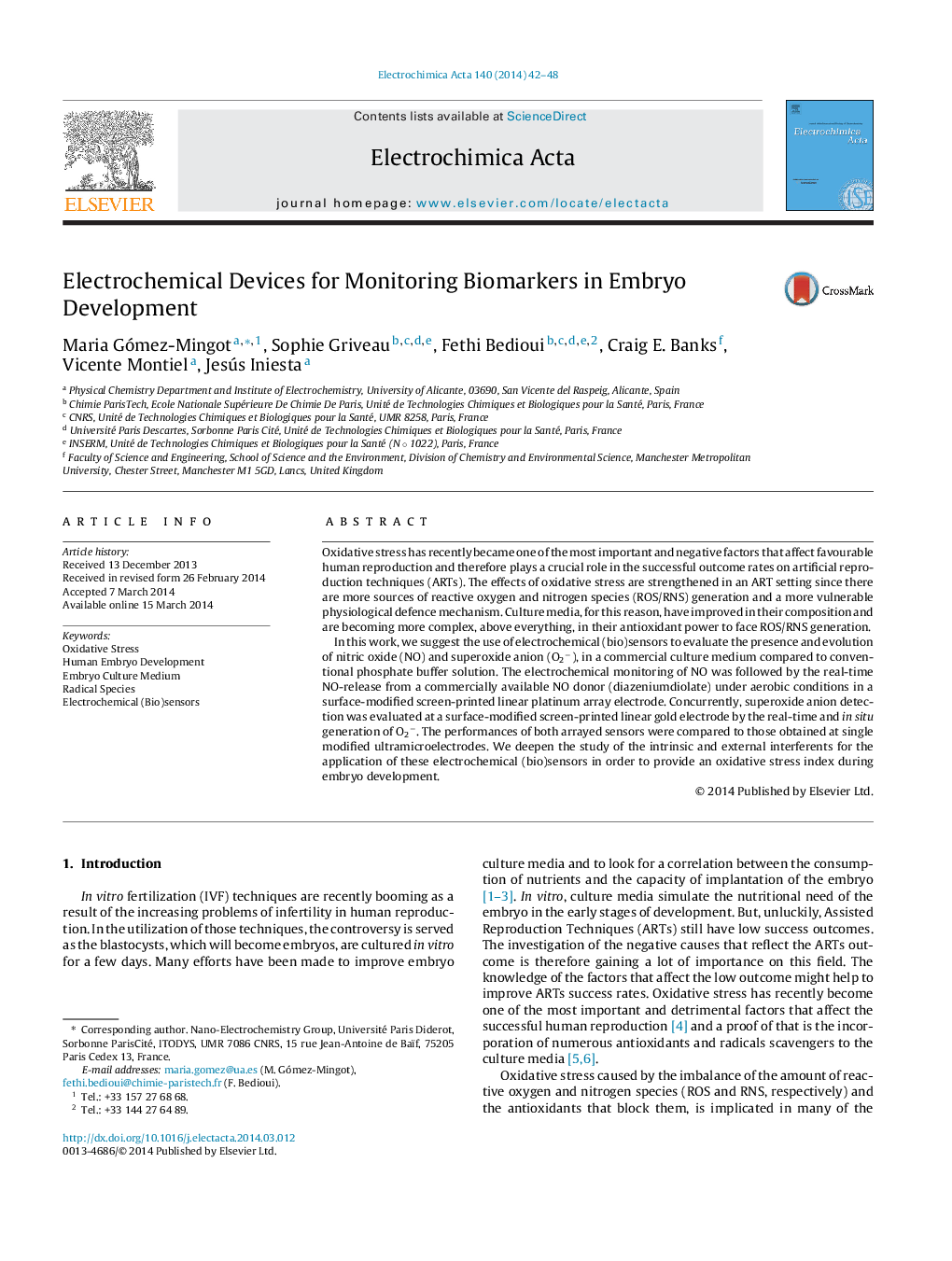| Article ID | Journal | Published Year | Pages | File Type |
|---|---|---|---|---|
| 185192 | Electrochimica Acta | 2014 | 7 Pages |
•Oxidative stress in embryo culture media with improved and complex composition.•Electroanalytical methods for monitoring artificial reproduction techniques (ARTs).•An array of 8 linear screen-printed electrodes of Au and Pt for monitoring ROS/RNS.•Selective and sensitive electrochemical (bio)sensors for the detection of O2− and NO.•Evaluation of antioxidant power of a commercial embryo culture medium.
Oxidative stress has recently became one of the most important and negative factors that affect favourable human reproduction and therefore plays a crucial role in the successful outcome rates on artificial reproduction techniques (ARTs). The effects of oxidative stress are strengthened in an ART setting since there are more sources of reactive oxygen and nitrogen species (ROS/RNS) generation and a more vulnerable physiological defence mechanism. Culture media, for this reason, have improved in their composition and are becoming more complex, above everything, in their antioxidant power to face ROS/RNS generation.In this work, we suggest the use of electrochemical (bio)sensors to evaluate the presence and evolution of nitric oxide (NO) and superoxide anion (O2−), in a commercial culture medium compared to conventional phosphate buffer solution. The electrochemical monitoring of NO was followed by the real-time NO-release from a commercially available NO donor (diazeniumdiolate) under aerobic conditions in a surface-modified screen-printed linear platinum array electrode. Concurrently, superoxide anion detection was evaluated at a surface-modified screen-printed linear gold electrode by the real-time and in situ generation of O2−. The performances of both arrayed sensors were compared to those obtained at single modified ultramicroelectrodes. We deepen the study of the intrinsic and external interferents for the application of these electrochemical (bio)sensors in order to provide an oxidative stress index during embryo development.
